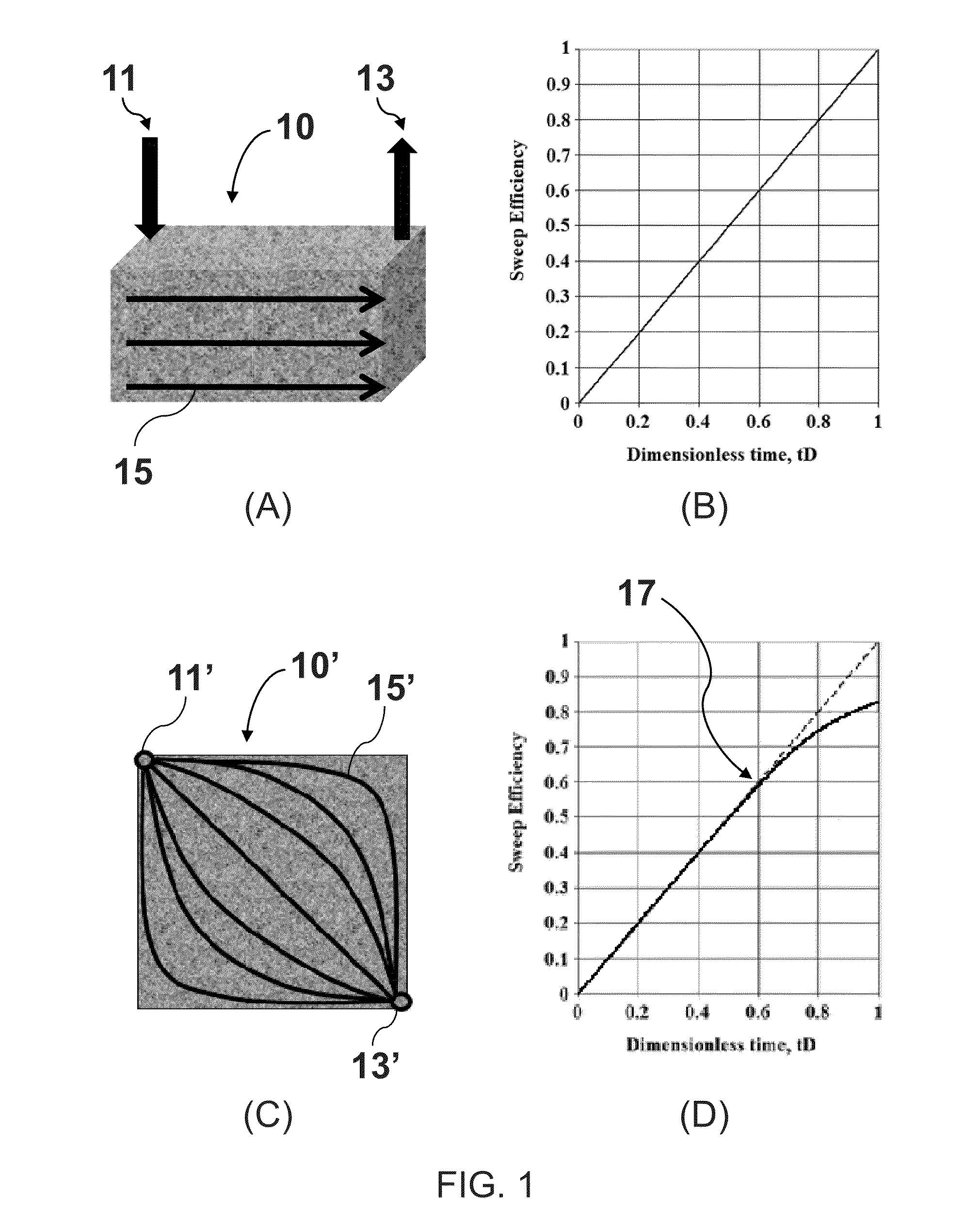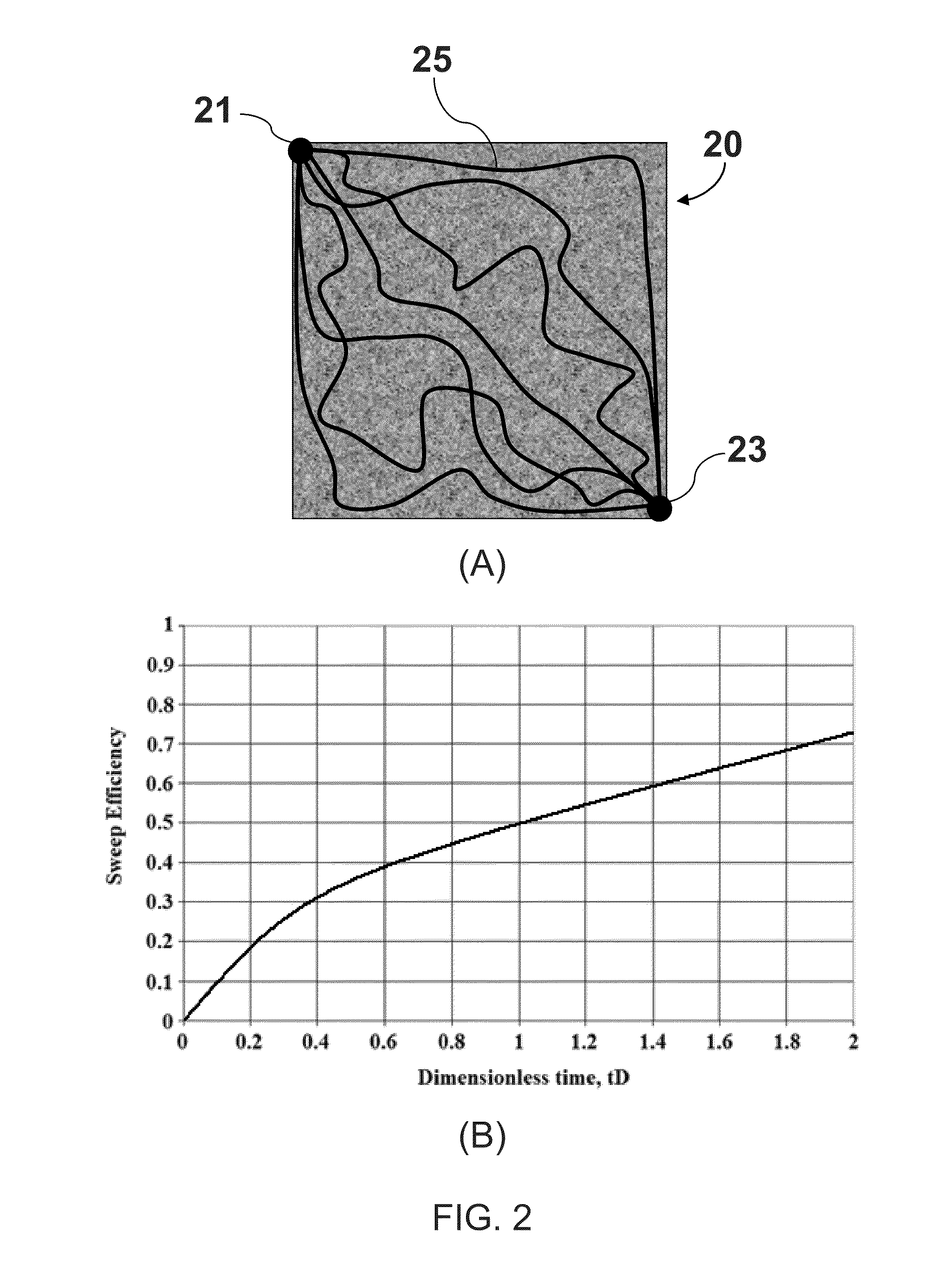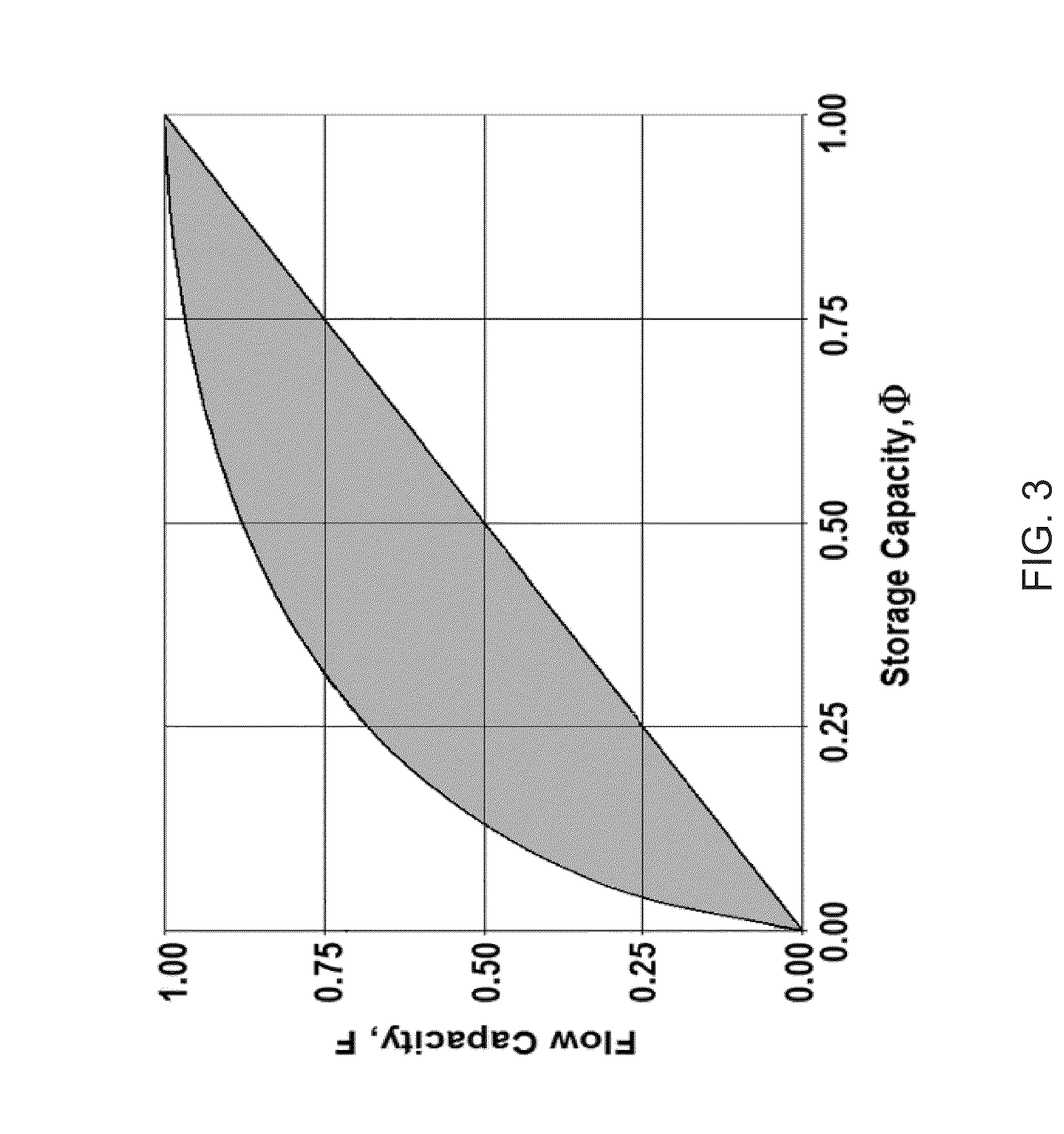System and method for enhancing oil recovery from a subterranean reservoir
a technology of oil recovery and subterranean reservoir, which is applied in the direction of fluid removal, borehole/well accessories, survey, etc., can solve the problems of reducing the displacement coefficient of the displacement coefficient, reducing and reducing the original oil in place. , to achieve the effect of optimizing the sweep efficiency of the enhanced oil recovery process and reducing the displacement coefficien
- Summary
- Abstract
- Description
- Claims
- Application Information
AI Technical Summary
Benefits of technology
Problems solved by technology
Method used
Image
Examples
example i
FIG. 8A shows two simulation layers for a permeability field of a conceptual reservoir flow model consisting of five different sands. The permeability field was created with non-sequential Gaussian simulation. The permeability values range from 0.1 to 523 millidarcies (mD), with a mean of 50 mD and a standard deviation corresponding to a Dykstra-Parsons coefficient of 0.6. Permeability was log-normally populated with the dimensionless correlation lengths provided in Table 1 below. Horizontal permeability was assumed to be isotropic and having a vertical to horizontal permeability ratio of 0.1 (kv / kh=0.1). Porosity was populated from the permeability field and random noise was added such that the porosity-permeability relationship was more realistic. Other parameters of the model are also summarized below in Table 1.
TABLE 1Model ParametersGrid101 × 101 × 10P-P spacing, ft**1300Grid size, ft26, 26, 5P-I spacing, ft**919Datum, ft3300μo (@datum), cp2Pinitial, psi1485Rs, scf / rb200Øavg0.2...
example ii
FIGS. 13 and 14 are three-dimensional views of a reservoir model of Brugge Field. In particular, FIG. 13 shows the locations of wells in Brugge Field and FIG. 14 shows the horizontal permeability field of its reservoir zones. Details of Brugge Field are taken from a Society of Petroleum Engineers (SPE) comparative study, which was held in June 2008 to benchmark the use of history matching and flood optimization methods. In particular, a three-dimensional synthetic dataset was constructed consisting of 104 upscaled realizations of a 3D geological model, well-log data from wells with fixed positions, ten years of the production history, inverted time-lapse seismic data in terms of (uncertain) pressures and saturations, and economic parameters for oil and water (price and discount rate). Previous results of this study and a variety of techniques used by competitors are reported in SPE Paper No. 119094.
The structure of Brugge Field consists of an E-W elongated half-dome with a large bou...
PUM
 Login to View More
Login to View More Abstract
Description
Claims
Application Information
 Login to View More
Login to View More - R&D
- Intellectual Property
- Life Sciences
- Materials
- Tech Scout
- Unparalleled Data Quality
- Higher Quality Content
- 60% Fewer Hallucinations
Browse by: Latest US Patents, China's latest patents, Technical Efficacy Thesaurus, Application Domain, Technology Topic, Popular Technical Reports.
© 2025 PatSnap. All rights reserved.Legal|Privacy policy|Modern Slavery Act Transparency Statement|Sitemap|About US| Contact US: help@patsnap.com



